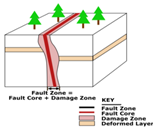

A major disaster struck the Himalayan state of Uttrakhand recently. A glacier broke after an avalanche in the Joshimath area of the state’s Chamoli district.
Context
A major disaster struck the Himalayan state of Uttrakhand recently. A glacier broke after an avalanche in the Joshimath area of the state’s Chamoli district.
Background
- Human activities profoundly affect the earth’s climate and mountains are a sensitive indicator of that effect and they provide an early glimpse of what could come to pass in a lowland environment.
- The mountain ecosystem is easily disrupted by variations in climate owing to their altitude, slope, and orientation to the sun.
- As the earth heats up, mountains glaciers melt at unprecedented rates, while rare plants and animals struggle to survive over ever-diminishing areas.
- The melting of Himalayan glaciers has doubled since the start of the 21st century due to rising temperature, losing over vertical foot-and-half or ice each year, and potentially threatening water supply for hundreds of millions of people in countries.
- Now, another disaster induced by climate change due to the negative impact of humans on the environment has been witnessed.
- Previously, the region has witnessed devastating earthquakes and in the recent past earthquakes in Chamoli and flood in Kedarnath has been witnessed.
Analysis
What is a glacier outburst? What causes this disaster?
- Glacial lake outburst floods (GLOF) is being considered to be the most likely trigger for this event.
- GLOF is a reference to flooding caused downstream due to a breach in a glacial lake.
- Retreating glaciers, like several in the Himalayas, usually result in the formation of lakes at their tips, called proglacial lakes, often bound only by sediments and boulders.
- If the boundaries of these lakes are breached, it can lead to large amounts of water rushing down to nearby streams and rivers, gathering momentum on the way by picking up sediments, rocks, and other material, and resulting in flooding downstream.
- GLOF events are not unusual, but their impact depends on the size of the proglacial lake that burst, and its location.
- In the Hindu Kush Himalaya, moraine-dammed glacial lakes are common and numerous GLOF events have been traced back to the failure of moraine dams.
Why made the Himalayas so prone to disasters?
- There are four major faults in the Himalayas, including the Himalayan Frontal Fault and the Trans Himadri Fault. Multiple faults have developed parallel to these four.
- This branching and sub-branching mean that this is a zone of faults. The movement of thousands of years means that all rock formations are broken and crushed.
- Water penetrates deep into the interior and sabotages the rocks from the inside. It washes away the base of the rocks.
- Even if smaller ruptures occur along with short segments of the mountains, stress builds up along the faults. That accumulated stress eventually triggers an enormous earthquake.
- Thus the number of landslides is high in the region. Landslides and earthquakes will continue to happen in the region because of the movement of the plates in the Himalayas.
|
What is a ‘fault’?
|
How rapidly the Himalayas is losing its ice?
- As per the first-ever assessment of climate changeimpacts on the Hindu Kush Himalayan (HKH) region, the number of glaciers in the Himalayan area has increased in the last five decades.
- This is an indicator of how severe glacier melting has been due to global warming.
- The increase in the number of glaciers is primarily due to glacier fragmentation.
- Glacier fragmentation refers to the splitting of big glaciers into smaller ones.
- And this is happening due to consistent loss in areas the glaciers occupy.
- Since the 1950s, only reductions have been observed in glacier area (or shrinkage).
- Based on a compilation of area change studies, eastern Himalayan glaciers have tended to shrink faster than glaciers in the central or western Himalayas.
- In the northern slopes of the Himalayas, glaciers are receding.
|
Glacier area change ranges between −0.1 percent/year for the Chandra-Bhaga basin (northwestern Indian Himalayan region) between 1980 and 2010 to more than −1 percent/year for the Poiqu basin (on the northern slopes of central Himalaya) between 1986 and 2001. |
What can be the reasons behind the recent disaster?
- Low snowfall: Reduced snowfall this winter due to climate change may have played a major part in the glacier bursts. The glacial outbursts are also related to global warming. As the temperature soars during summers, the glaciers retreat, leaving behind water-filled, unstable moraine-dammed lakes.
- Large hydropower projects: The entire State of Uttarakhand is categorized as falling in Zone-IV and V of the earthquake risk map of India. Despite the threat of such calamity, large hydropower projects are in vogue in the state. The potential of the cumulative effect of multiple such projects has turned out to be more environmentally damaging than sustainable, given the current policy of the state government of pursuing hydro-power projects indiscriminately.
Conclusion
Uttarakhand is a wake-up call, not just for the Government and people in the state, but also the planners and decision-makers all over the country. It is said that those who fail to learn from history are doomed to suffer from it repeatedly. It is high time, therefore, for the government to realize that the Himalayan mountains are fragile and impatient, and the government shall set its development priorities and projects based on the potential of the mountains, local and traditional knowledge as well as aspirations of the place.



